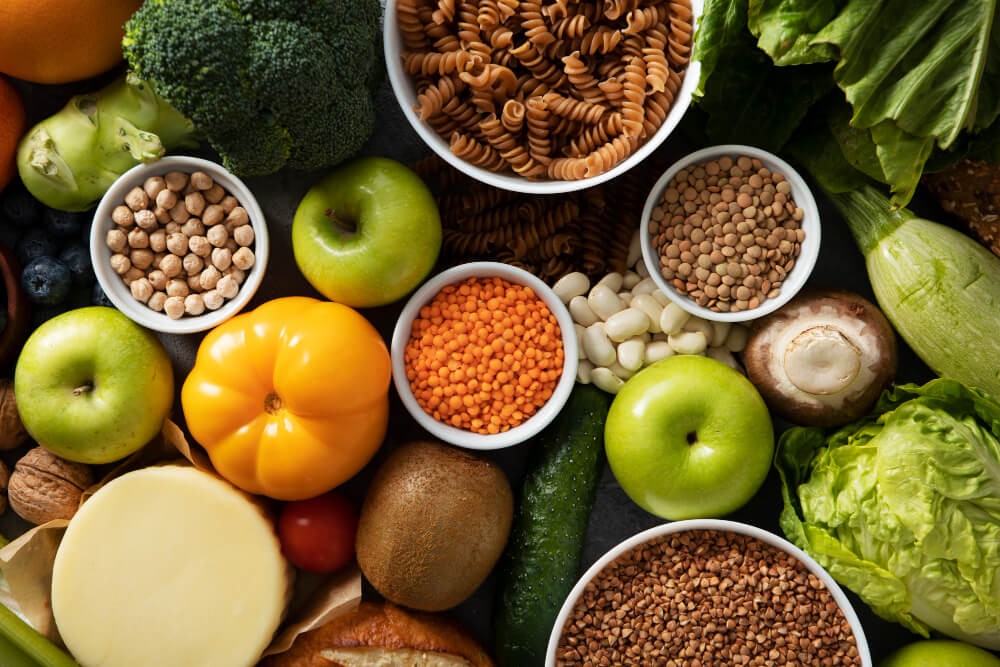The term "fortification" is no longer unfamiliar in the industry of food and beverages. Fortification is a component of initiatives to improve public health and deal with nutritional deficiencies.
Food fortification may also improve the availability of extra nutrients to a significant proportion of the population, particularly children and pregnant women. Learn more about the advantages of food and beverage fortification.
What is food fortification?
Food fortification is the technique of adding one or more micronutrients (vitamins and minerals) to food or drink to improve its content and nutritional value. Food fortification mostly serves to prevent malnutrition in society, which can result from a less varied diet or limited availability of nutritious foods.
Fortification is a crucial approach in Indonesia's national health program for solving community nutrition issues. The addition of iodine to salt, known as fortification, has proven to be effective in controlling goiter problems in numerous regions.
Various food and beverage goods, including salt, wheat flour, bakery items, milk, dairy products, cooking oils, orange juice, packaged fruit juices, and morning cereals, are frequently enriched with essential vitamins and minerals.
According to the World Health Organization (WHO), fortified foods are expected to have the capability to preserve the integrity of the supplemented micronutrients without causing significant changes to the flavor, texture, or appearance.
Read more: Are Children Healthy For Cereal Breakfast Every Day?
Purposes of food fortification
There are numerous primary objectives associated with food and beverage fortification, such as:
- Avoid micronutrient deficits by offering food and beverages fortified with essential vitamins and minerals that may be deficient in the regular diet.
- Improving dietary consumption to improve overall well-being
- Lowers the risk of disorders associated with insufficiencies of specific vitamins and minerals
Benefits of Food and Beverage Fortification
Improving the nutritional value of food and beverages has numerous advantages, such as:
Increase nutritional intake
Food fortification is a highly efficient strategy for increasing the nutritional intake among a large and diverse population. Inadequate levels of essential vitamins and minerals, such as iron, iodine, vitamin A, and folic acid, can lead to a range of health issues. Fortification is a process that helps guarantee people obtain sufficient amounts of nutrients to prevent diseases caused by inadequacies in nutrition.
Decreases the risk of birth defects
Fortifying food can decrease the risk of birth abnormalities, particularly those caused by inadequate levels of certain nutrients during pregnancy, such folic acid.
Folic acid, often known as vitamin B9, is crucial for pregnant women since it plays a vital role in the prevention of neural tube abnormalities in babies. The neural tube is the embryonic structure that enables shape to the brain and spinal cord.
Read more: Breakfast First Or Brush Your Teeth First, Which One Is The Best?
Supports child growth and development
A nutritious diet is essential for children to achieve healthy physical growth. An inadequate supply of vitamins and minerals may inhibit growth and lead to a range of health issues.
Iron, iodine, and folic acid are crucial for the development of the brain and cognitive function. A lack of essential nutrients can lead to cognitive impairments and intellectual disability.
Essential nutrients including vitamins A, D, and calcium play a crucial role in maintaining strong bones, supporting the immune system, and preventing diseases. Fortified meals and beverages provide an option of obtaining all of these essential vitamins and minerals.
Always refer to the nutrition label and adjust it according to your dietary needs in order to get the benefits of fortified foods. If you need medical advice or consultation, you can either visit a doctor or make use of the consultation features that are available in the Ai Care application by downloading the Ai Care application from the App Store or Play Store.
Looking for more information about nutrition, food, and other diet tips? Click here!
- dr Nadia Opmalina
WebMD (2024). What to Know About Fortified Foods. Available from: https://www.webmd.com/diet/what-to-know-about-fortified-foods
Ashley Sobel, RD, CDN (2019). What Is Fortified Cereal, and Is It Healthy?. Available from: https://www.healthline.com/nutrition/fortified-cereal
WHO. Food fortification. Available from: https://www.who.int/health-topics/food-fortification#tab=tab_1
Maria Heffernan, et all (2021). Effectiveness of a fortified drink in improving B vitamin biomarkers in older adults: a controlled intervention trial. Available from: https://nutritionandmetabolism.biomedcentral.com/articles/10.1186/s12986-021-00630-8












